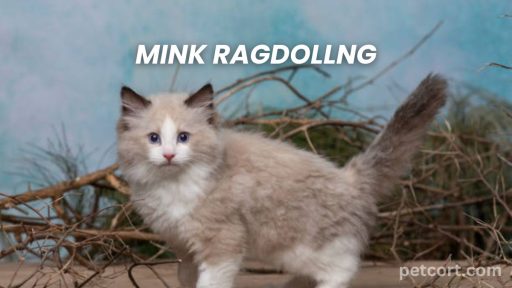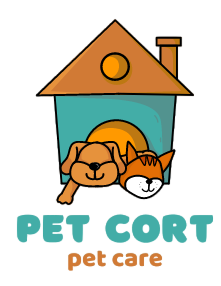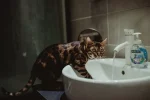Mink Ragdoll cats are known for their striking beauty, gentle personalities, and affectionate nature.
Among the various color varieties of this beloved breed, the mink ragdoll stands out with its rich, warm hues and captivating appearance.

In this comprehensive guide, we’ll explore the world of mink ragdoll cats, delving into their unique characteristics, care requirements, and the factors that make them such a sought-after choice for cat lovers.
Contents
Understanding the Mink Ragdoll
The mink ragdoll is a specific color variation of the ragdoll breed, characterized by a warm, brownish-gray coat that resembles the luxurious fur of a mink. This stunning coat color, combined with the breed’s signature semi-longhair and blue eyes, creates a striking and visually appealing feline companion.
The Origins of Ragdoll Cats
Before diving into the specifics of the mink ragdoll, it’s essential to understand the breed’s origins. Ragdoll cats were first developed in the 1960s by Ann Baker, a breeder from Riverside, California. Baker’s aim was to create a breed with a docile, affectionate temperament and a unique, floppy body type when picked up, reminiscent of a ragdoll toy.
Over the years, selective breeding and careful attention to temperament and physical characteristics have led to the development of the ragdoll breed we know and love today, including the stunning mink variety.
The Mink Ragdoll’s Coat and Coloration
One of the most distinguishing features of the mink ragdoll is its warm, rich coat color. The mink pattern is a combination of three colors: red, cream, and brown. This unique blend results in a gorgeous, brownish-gray hue that can range from light to dark, depending on the individual cat.
Unlike solid-colored cats, the mink ragdoll’s coat exhibits a distinct pattern known as “ticking.” This pattern is created by the alternating bands of light and dark colors on each individual hair strand, giving the coat a depth and richness that is truly captivating.
You May Also Like:
Orange Ragdoll Cat
Caring for a Mink Ragdoll Cat
While mink ragdolls share many traits with other ragdoll cats, there are certain care considerations to keep in mind:
Grooming Needs
Despite their semi-longhair coats, mink ragdolls are generally considered moderate shedders. However, regular grooming is still essential to maintain their coat’s health and appearance. Here are some grooming tips:
- Brushing: Brush your mink ragdoll at least once a week with a slicker brush or a wide-toothed comb to remove loose hair and prevent matting.
- Bathing: Mink ragdolls may benefit from occasional bathing, but be sure to use a gentle, cat-safe shampoo and conditioner to preserve their coat’s natural oils and shine.
- Nail Trimming: Keep your mink ragdoll’s nails trimmed to prevent accidental scratches and furniture damage.
- Ear Cleaning: Check and clean your cat’s ears regularly to prevent wax buildup and potential ear infections.
Nutrition and Diet
Like all cats, mink ragdolls require a balanced and nutritious diet to thrive. Here are some dietary considerations:
- High-Quality Cat Food: Choose a high-quality, protein-rich cat food formulated for their life stage (kitten, adult, or senior).
- Wet and Dry Food: Consider offering both wet and dry food options to provide variety and ensure adequate hydration.
- Portion Control: Monitor your mink ragdoll’s food intake and adjust portions as needed to maintain a healthy weight.
- Supplements: Consult with your veterinarian about any necessary supplements, such as omega-3 fatty acids for a healthy coat.
Exercise and Mental Stimulation
Mink ragdolls, like all ragdoll cats, are known for their laid-back personalities. However, they still require regular exercise and mental stimulation to stay healthy and happy. Here are some tips:
- Interactive Playtime: Engage your mink ragdoll in interactive playtime with toys that mimic prey, such as wand toys or laser pointers.
- Puzzle Feeders: Use puzzle feeders or treat balls to encourage physical and mental activity during mealtime.
- Cat Trees and Scratching Posts: Provide cat trees and scratching posts to encourage natural scratching behavior and vertical exploration.
- Outdoor Enclosures or Leash Training: Consider creating a secure outdoor enclosure or leash training your mink ragdoll for supervised outdoor adventures.
Health Considerations for Mink Ragdolls
Like all breeds, mink ragdolls can be prone to certain health conditions. Being aware of these potential issues can help you provide the best care for your feline companion:
Common Health Concerns
While generally healthy, mink ragdolls may be susceptible to the following conditions:
- Hypertrophic Cardiomyopathy (HCM): This is a heart condition that can affect ragdolls and other breeds, leading to thickening of the heart muscle.
- Feline Lower Urinary Tract Diseases (FLUTD): Ragdolls may be at a higher risk for developing urinary tract issues, such as crystals or stones.
- Obesity: Due to their laid-back nature, ragdolls can be prone to obesity if their diet and exercise are not properly managed.
- Dental Issues: Regular dental care is important to prevent periodontal disease, a common issue in cats.
Genetic Testing and Screening
Responsible breeders may offer genetic testing and screening for potential health issues, such as HCM or progressive retinal atrophy (PRA). This can help identify and prevent the transmission of certain conditions to future generations.
Regular Veterinary Care
Regular veterinary check-ups and preventive care, such as vaccinations, flea and tick control, and deworming, are essential for maintaining the overall health and well-being of your mink ragdoll cat.
You May Also Like:
Are Ragdoll Cats Hypoallergenic
Living with a Mink Ragdoll Cat
Mink ragdolls are known for their affectionate and gentle personalities, making them excellent family companions. However, there are some considerations to keep in mind when introducing a mink ragdoll into your household:
Socialization and Training
Ragdolls, including the mink variety, are generally easy to socialize and train. They are intelligent and respond well to positive reinforcement techniques, such as clicker training or reward-based methods.
Compatibility with Children and Other Pets
Mink ragdolls are typically good with children and other pets, thanks to their laid-back and friendly nature. However, proper introductions and supervision are still necessary, especially with young children and other animals.
Environmental Enrichment
To keep your mink ragdoll mentally stimulated and engaged, provide a variety of toys, scratching posts, and cat trees. Rotate toys regularly to prevent boredom and encourage natural behaviors like scratching and climbing.
Grooming and Shedding
While mink ragdolls are moderate shedders, their semi-longhair coats may require more grooming than shorthaired breeds. Regular brushing and occasional bathing can help manage shedding and keep their coats healthy and looking their best.
Breed Comparisons: Mink Ragdoll vs Other Cat Breeds
To better understand the unique traits of the mink ragdoll, let’s compare it to some other popular cat breeds:
| Breed | Coat Length | Temperament | Grooming Needs | Potential Health Issues |
|---|---|---|---|---|
| Mink Ragdoll | Semi-longhair | Affectionate, laid-back | Moderate | HCM, FLUTD, obesity |
| Persian | Longhair | Calm, quiet | High | Respiratory issues, eye problems |
| Maine Coon | Semi-longhair | Friendly, adaptable | Moderate | HCM, hip dysplasia |
| Siamese | Shorthair | Vocal, active | Low | Dental issues, respiratory problems |
| British Shorthair | Shorthair | Easygoing, loyal | Low | HCM, obesity |
As you can see, while the mink ragdoll shares some characteristics with other semi-longhair breeds like the Maine Coon, its temperament and potential health concerns are unique to the ragdoll breed.
You May Also Like:
Grey Ragdoll Cat
Myths and Misconceptions About Mink Ragdolls
As with any breed, there are several myths and misconceptions surrounding mink ragdoll cats that need to be addressed:
Myth: Mink Ragdolls Are Hypoallergenic
Unfortunately, there is no such thing as a truly hypoallergenic cat breed. While some breeds may produce fewer allergens than others, all cats produce the Fel d 1 protein that can trigger allergies in sensitive individuals. Mink ragdolls are no exception.
Myth: Mink Ragdolls Are Low-Maintenance
While mink ragdolls are generally calm and laid-back, they still require regular grooming, exercise, and mental stimulation to maintain their health and well-being. Their semi-longhair coats require brushing and benefit from interactive playtime and environmental enrichment.
Myth: All Mink Ragdolls Have the Same Coat Color
The mink pattern in ragdolls can vary in shade and intensity, ranging from light to dark brownish-gray. Depending on the individual cat’s specific coat coloration, some mink ragdolls may even exhibit a more reddish or golden hue.
Conclusion
The mink ragdoll is a stunning and unique variety of the beloved ragdoll breed. With their warm, rich coats, captivating blue eyes, and gentle personalities, these feline companions have won the hearts of many cat lovers worldwide. While they share many traits with other ragdolls, their distinct appearance and potential health considerations make them a breed worth exploring.
Whether you’re a seasoned cat owner or considering adding a furry friend to your family, the mink ragdoll’s beauty, affectionate nature, and moderate grooming needs make them an excellent choice. However, it’s essential to research and understand their specific care requirements and health considerations to ensure a happy and healthy life for you and your feline companion.
FAQs
While not as common as some other ragdoll color varieties, mink ragdolls are not considered rare. However, finding a reputable breeder may require research and patience, as ethical breeders may have waitlists or limited litter availability.
Mink ragdolls are considered moderate shedders. While they shed more than shorthaired breeds, regular brushing and grooming can help manage loose hair in your home.
The cost of a mink ragdoll kitten can vary depending on the breeder and location, but they are generally priced similarly to other ragdoll color varieties from reputable breeders.
Like all ragdolls, Mink ragdolls can thrive as indoor-only cats with plenty of environmental enrichment and playtime. However, providing safe outdoor access through a secure enclosure or leash training can benefit their physical and mental well-being.
Mink ragdolls are generally good with children due to their laid-back and affectionate personalities. However, proper supervision and introductions are still necessary, especially with young children who may not understand how to interact safely with cats.
Share Your Friends






